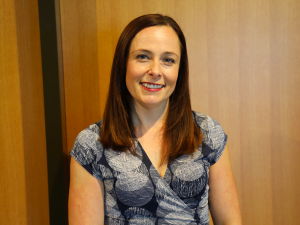At the start of the COVID-19 lockdown 3 months ago, I posted a piece on LinkedIn around what I saw as a major positive from a talent and people operations perspective.
That being a forced shift in perspective around how businesses manage and engage with their talent and a refocused push towards a people-driven culture of communication and collaboration. There are a couple of points in particular from the Agile manifesto that have continued to resonate, namely:
- Individuals and interactions over processes and tools
- Responding to change over following a plan
So now 10 weeks down that track, we find ourselves on the cusp of Flexible Working Day again. Each year, we here at Jacinta Fish Legal have supported and tried to be the best advocates we could for flexible working. This year we find ourselves with a very different proposition – everyone is working flexibly, however, is flexibility working for everyone? I spoke with Kelly Mitchell, Employee Experience Lead at Tabcorp about how their business adapted and managed this shift in operations. For Tabcorp, whilst the lockdown presented some of the usual IT challenges their teams have largely been open and engaged with the business about how they are going and what they needed.
This years’ theme for Flexible Working Day is ‘reframing flexibility for the future’ and the COVID-19 pandemic has presented companies with an opportunity to re-evaluate what a productive working environment can look like, a chance to close the gender flex gap and a shift towards a new working norm where the focus on diversity and inclusion is stronger than ever. The founder of Flexible Working Day, Vanessa Vanderhoek, has suggested that 2020 is the year of the ‘flex paradigm shift’. “There’s no going back to what was. It’s about how we reframe and adapt.”
Kelly told me that for Tabcorp, the transition has worked due to flexibility, diversity and inclusion already being a strategic priority for the business. Their approach to flexible working is to start with a ‘yes’. She noted that it’s a shift in mindset; it changes the conversation.
“You need a good business case to demonstrate why it can’t be done”.
It also helped that, from a policy perspective, the business already had a good base to work from with strong health and safety plans for remote and flexible workers as well as training for leaders focused on inclusion and managing remote teams.
However, one of the biggest changes Tabcorp implemented stemmed directly from employee feedback a few weeks into the lockdown. Following a staff survey, the Experience team recognised one of the most significant difficulties people faced was a lack of connection within their internal teams and a sense of not knowing how to navigate all the information in the media. This led to an implementation of their Wellbeing Hub. They were able to quickly roll out a central platform with a range of information from how to run better online meetings to yoga and mindfulness videos. On top of that, much of the content was driven by using internal resources – it was thoughtful, engaging and personal. “We changed the communication – doing selfie videos, broadcasting and personalising our leaders.”
On top of that, using an onboarding platform already in place, the team were able to give leaders direct feedback including suggesting ways to better engage and support individual staff on a more personal level. They recognized that not everyone’s journey was the same and the feedback that came through, Kelly said, was that people felt their manager really cared about their wellbeing.
Kelly said one of the key successes was that they had won over several people who didn’t think remote working could be done well on this scale and to see their people not only show their resilience and deal with the changes but lean into it has been really positive.
In the coming weeks whilst Tabcorp refines their COVID-safe plans for staff to return to offices and address individual concerns, Kelly and the Experience team noted that perhaps one of the biggest challenges is still yet to come – which would be in line with the ‘reframing‘ theme. She suggested that it is likely that one of the strategic priorities for future planning will be a thoughtful review of the language the business uses around ‘remote’ and ‘flexible’ work. Of course, they first need to understand how people want to return to work over the coming weeks and months. With 5000 geographically dispersed staff to consider as well as changes to their physical environment, it will be the broader behavioural and cultural changes that will have the most long-lasting impact on the business.
